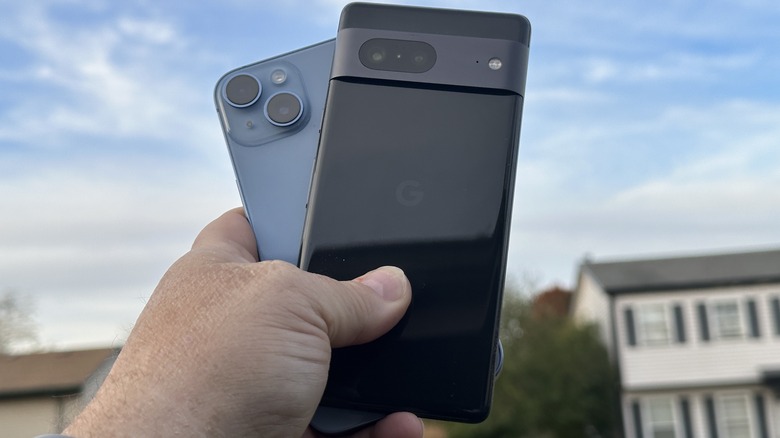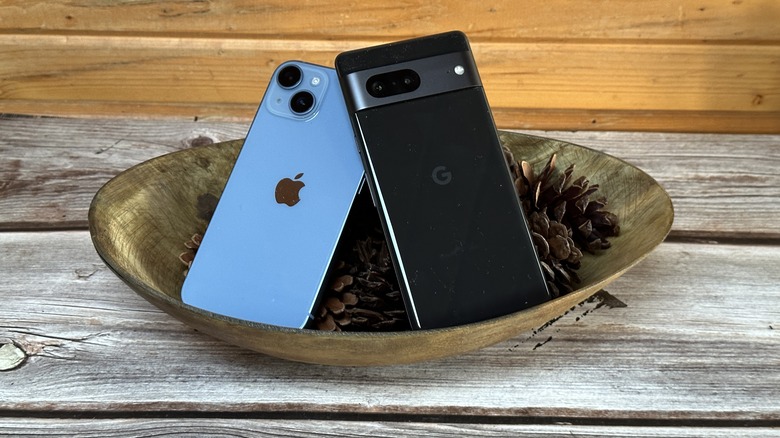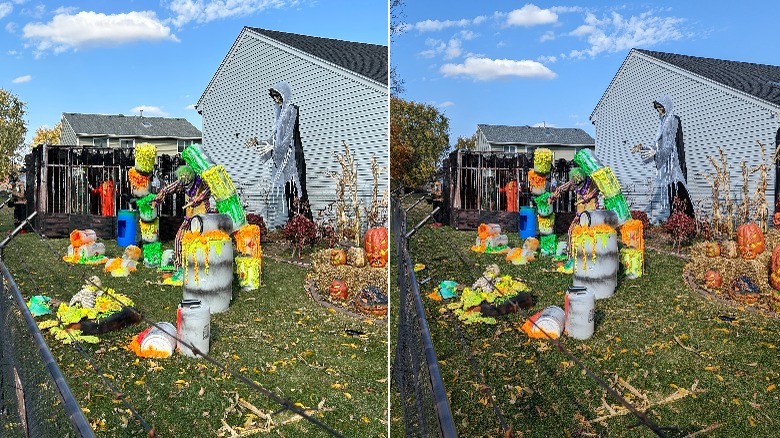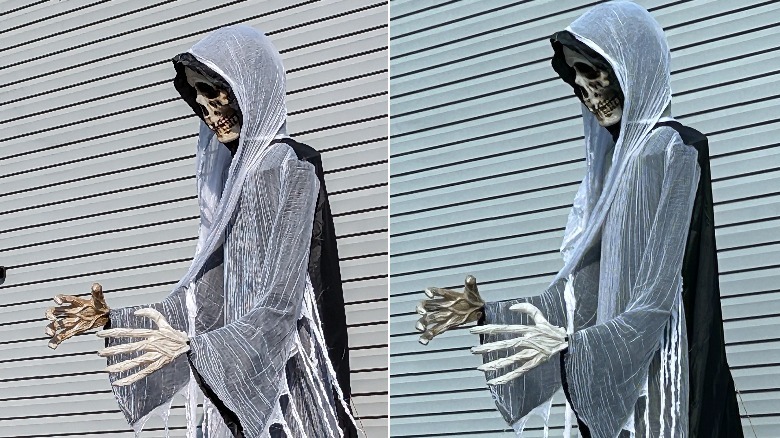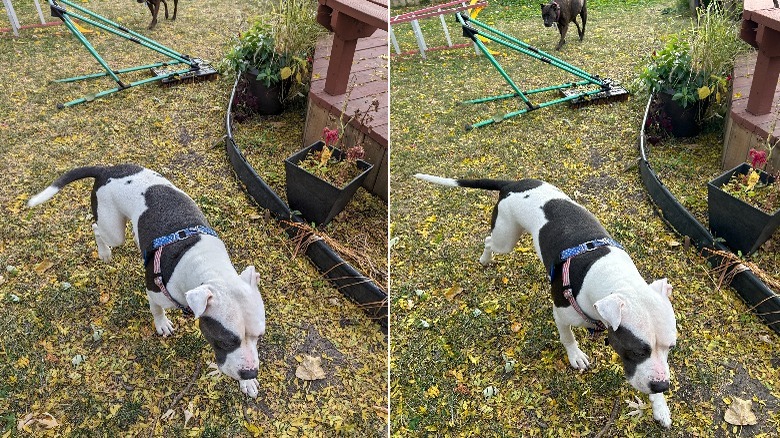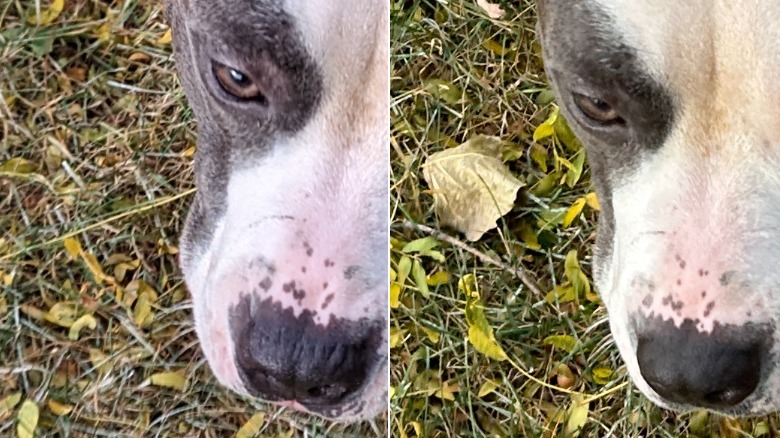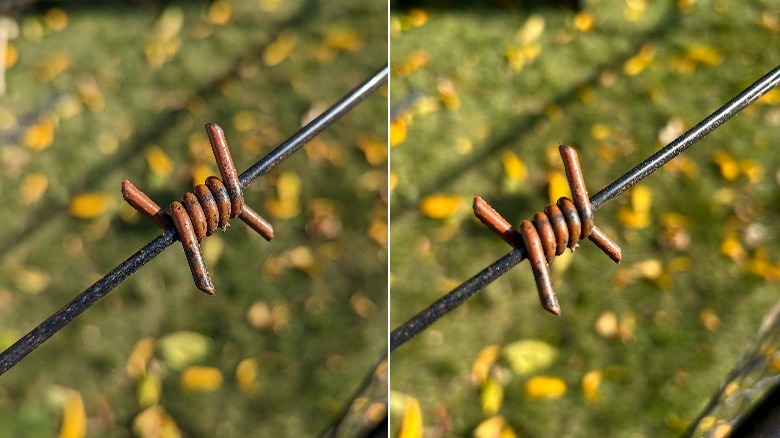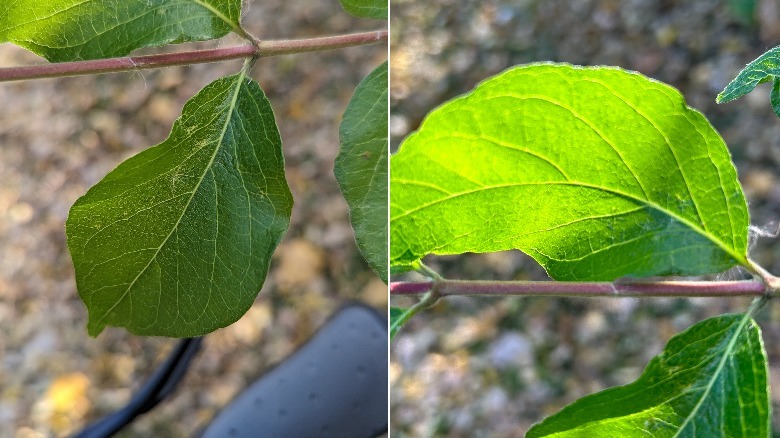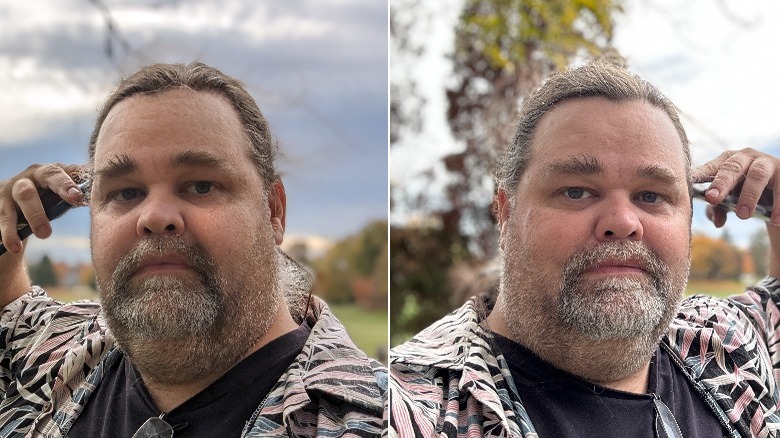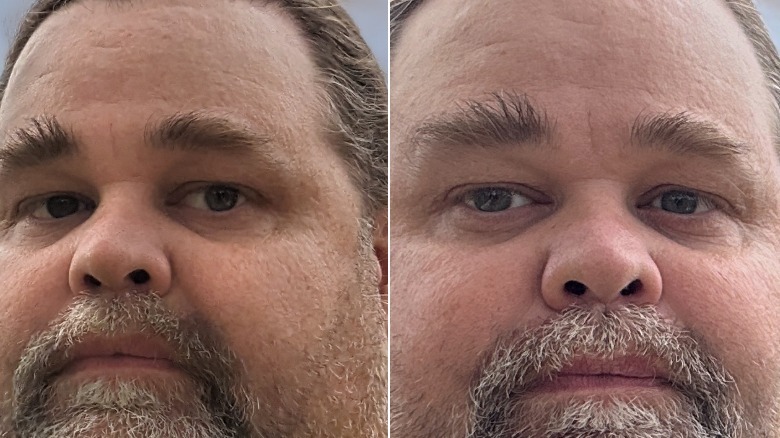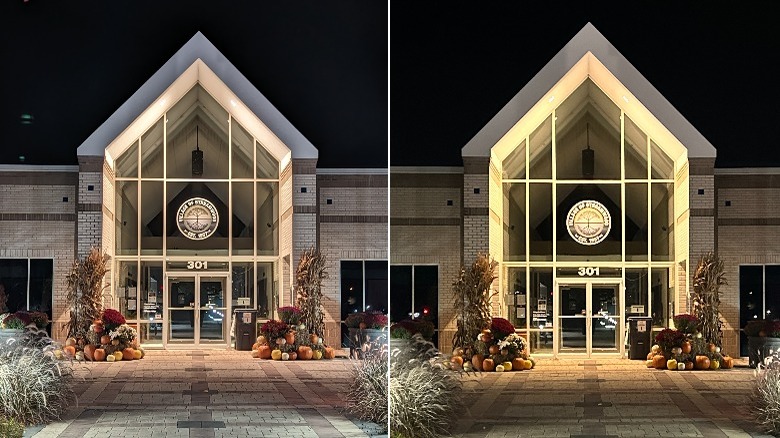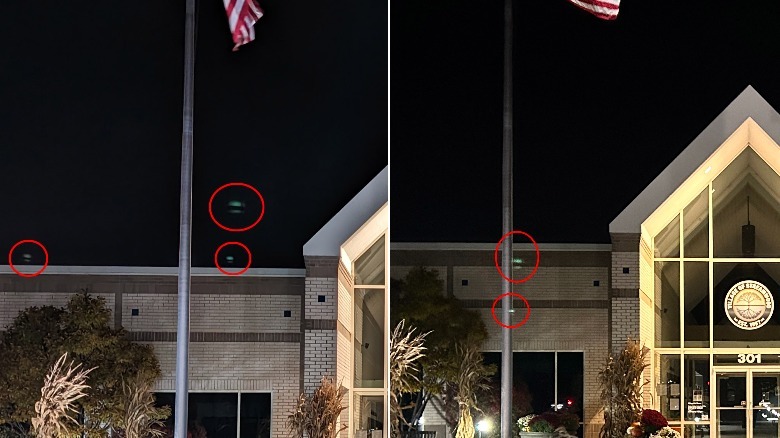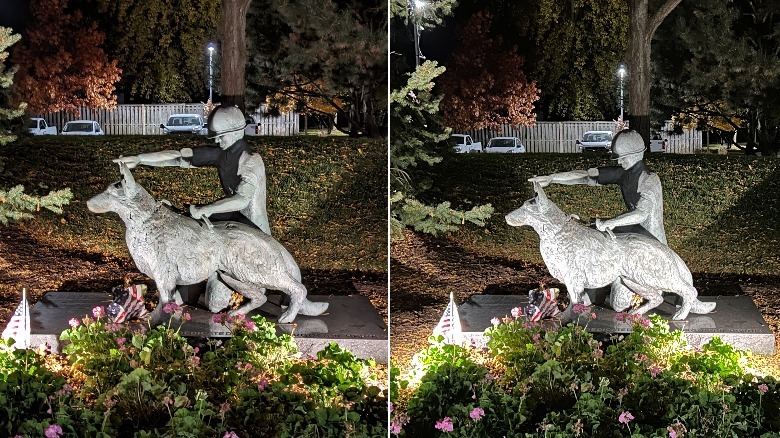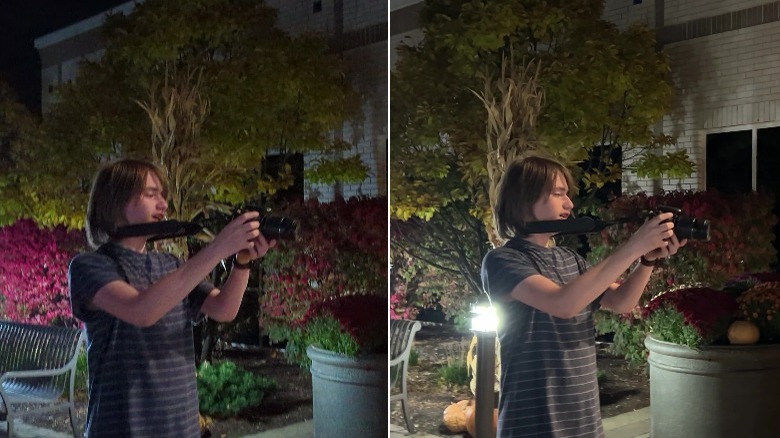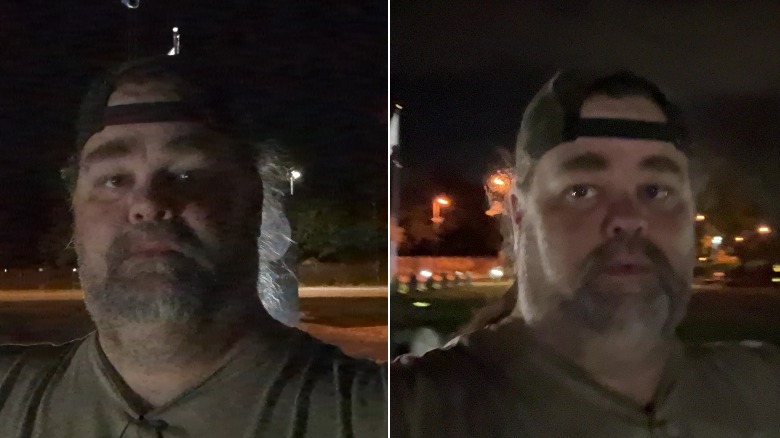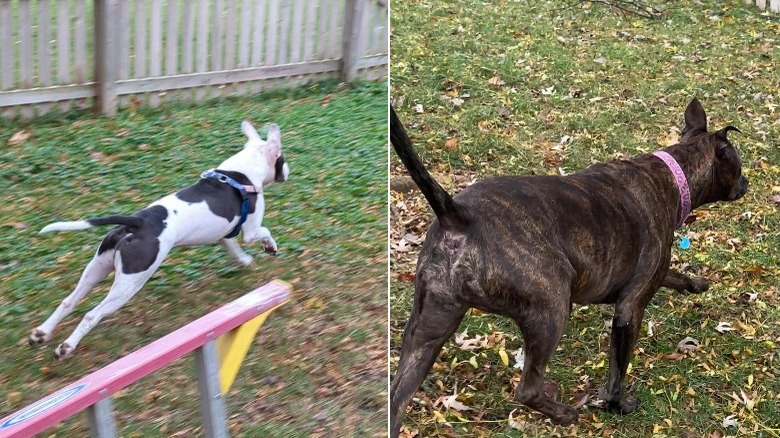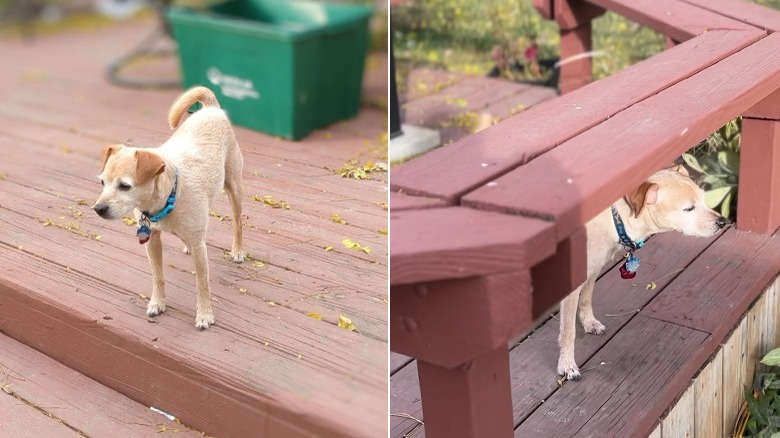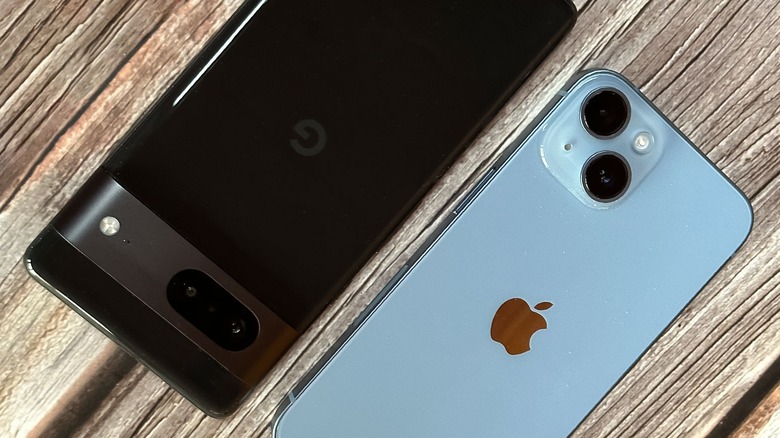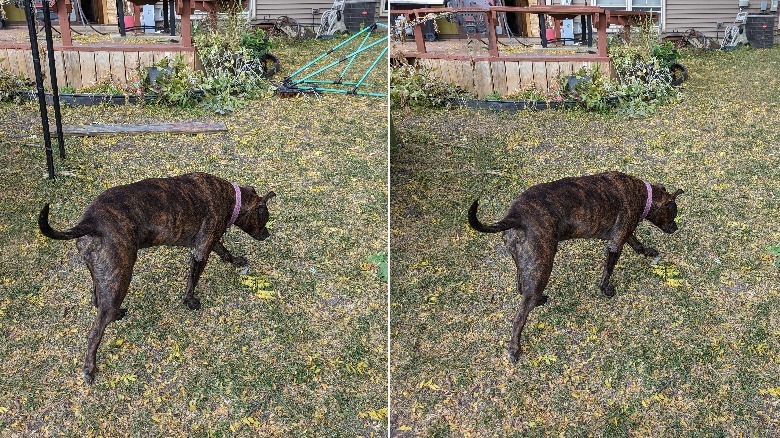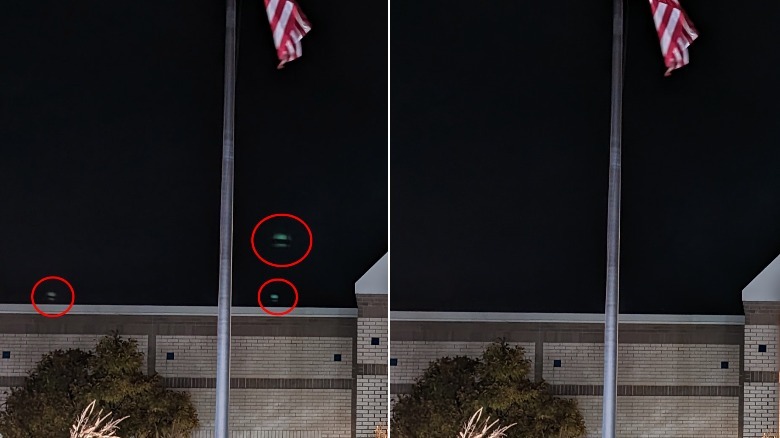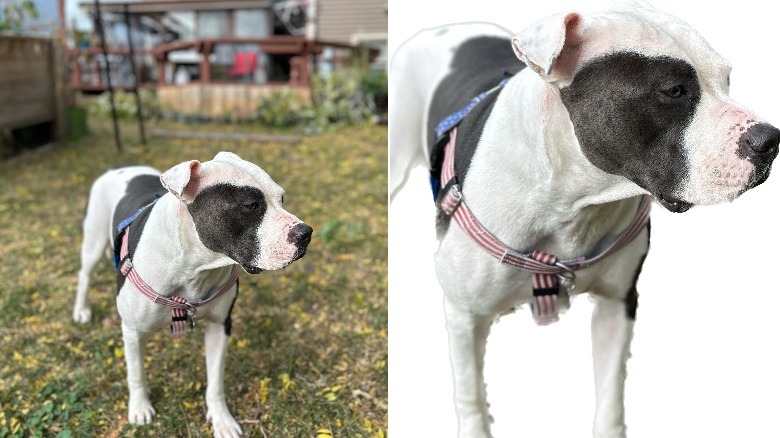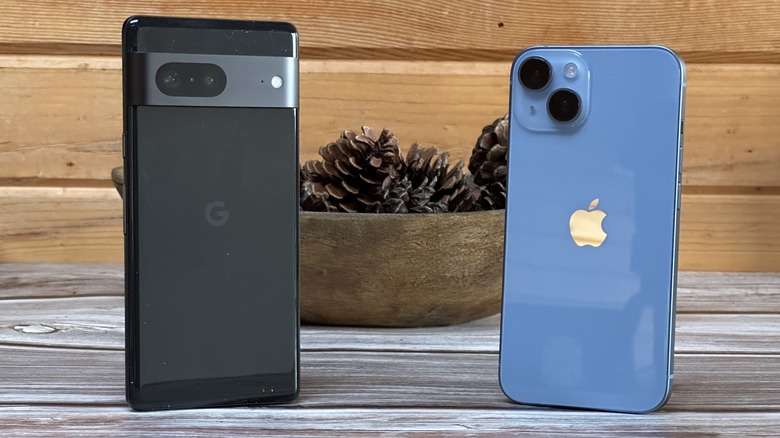iPhone 14 Vs Pixel 7 Camera Showdown: Which Snaps The Best Photos?
Google and Apple both updated their respective phone lineups recently, so we thought it was time to take a look at the new phones and see how their cameras stack up against each other. This particular shootout pits the more affordable phones — the iPhone 14 and the Pixel 7 – against each other. The former is a review loaner from Apple while the latter is a loaner from AT&T. This is going to be interesting because both phones are known for their solid photography chops, and both can do some cool things to photos after they're taken.
So which phone will win out? As always, we'll post side-by-side images below with the Google Pixel 7 shots on the left and the iPhone 14 shots on the right. For this shootout, I went out looking for some nifty Halloween displays around my neighborhood while I toured around on the Coston e-bike I reviewed. At night, I returned to my usual haunt at Streamwood's Village Hall. So, let's see who best ups your photography game.
The hardware
First, let's talk about the hardware we're working with. Both cameras have a dual-lens setup featuring an ultrawide camera and a main camera. Of the four cameras between the two phones, three of them are a 12 MP sensor. Only the main camera on the Pixel 7 is larger at 50 MP. That camera has an f/1.9 aperture and 1.2-micron pixels. The ultrawide camera on the Pixel has an f/2.2 aperture and a 114-degree field of view. Meanwhile, on the iPhone, the main sensor has an f/1.5 aperture and 1.9-micron pixels while the ultrawide has an f/2.4 aperture and a pretty wide 120-degree field of view.
As you can imagine on the surface, both cameras are pretty outstanding. About the only area where either phone falls short is in night videography, but even that isn't bad. If you recently picked up an iPhone 14 or a Pixel 7, you will be happy with your camera, full stop. But there are a few areas where one outperforms the other, once you get into nitty-gritty details.
In the sunshine
During the day, these cameras are superb, capturing awesome colors and detail. Right off the bat the main camera on the iPhone 14 tends to capture more detail by a very slim margin. You get just a bit more depth in your shots, especially when your subjects are between ten and fifteen feet away. The difference isn't huge, but it's noticeable at full resolution.
On the other hand, the ultrawide sensor on the Pixel 7 wins out in detail department. In fact, shots from the iPhone get a bit fuzzy at full resolution, but it also captures a noticeably wider shot. That would be the extra 6-degrees of field of view, which actually makes a pretty big difference. Of course, in order to illustrate the detail difference, I zoomed in, which defeats the purpose of those extra six degrees, so you'll just have to take my word for it.
Both phones maintain the same color profile between the sensors, which is already pretty great. The iPhone's digital zoom maxes out at 5x so I took competing shots at that magnification from both phones. The Pixel won out here too, maintaining not only the same color profile but also slightly sharper detail at full resolution.
Let's get moving
If there's one thing kids and dogs have in common, it's that they're basically always moving, which can make capturing moments tricky. When your subject is moving, both phones keep the subject pretty sharp, but here I have to give the edge to the iPhone 14. Detail is just a little sharper both in the subject of the photo and in the background behind the subject. The Pixel 7 keeps the subject of the photo (in this case, my dog) sharp, but the Pixel loses detail in the grass below him. You have to go to full resolution to see this, but I've demonstrated it in the 100% crops below.
The most noticeable area where the subject gets blurry is in the tail because again, it's always moving. The iPhone did a better job in that area as well and it's likely because the iPhone usually uses a fast shutter speed for all of its photos. The Pixel 7 is advertised to use data from the ultrawide camera to fill in details of faces that were moving during the shot. That doesn't apply to dog tails though and unfortunately dogs are easier to work with than my moody teenagers. Suffice it to say, the iPhone 14 is in a better position to succeed here.
Zooming in
When you're zooming in really close the iPhone 14 should have the advantage. Using Macro Mode, the iPhone switches to the ultrawide lens to get a crisp, clear shot. The Pixel similarly uses its ultrawide camera to get within 30mm of the subject. In my samples, the macro focus on the Pixel was superior to that of the iPhone. Oddly enough, the iPhone's focus was sharp, but not in the center of the frame where I intended. In the barbed wire shot, the focus is sharpest just to the right of the coil of wire I was trying to focus on. Similarly with the leaf below, the leaf to the right of center is sharper than the leaf in the middle of the field of view.
Meanwhile with the Pixel, the center of the frame is sharp with exquisite detail. The focus gets softer the further from the center you get, but what you want to shoot, you shoot well. Both phones have wonderful bokeh which sets the subject apart from the background, but in this case, the Pixel 7 is the clear winner.
Front camera features
On the front of the phone, the Pixel 7 sports a 10.8 MP shooter with f/1.9 aperture. The iPhone 14 has a 12 MP camera with f/1.5 aperture. Both phones max out at 4K video capture at 60 FPS. Selfies are pretty good with great color and detail. Portrait mode is also very solid. Both phones cut off the whisps of my hair floating around my head right about at the hairline, to the point where I couldn't tell if those were whisps of hair or tree branches in the background.
Above, you'll see a 75% crop, which is already more me than anyone wants to see. Overall, I prefer the Pixel 7's shot of my face, but it's only because it softened the age lines that are pretty evident all over my mug. The iPhone in the meantime preserves all of that detail for better or for worse. Bottom line, if you want a more technically accurate shot, go with the iPhone 14.
Stills in the dark
To be clear, in my career I have never come away impressed by any phone's low-light performance. But one of these phones comes awfully close in one area, while the other clearly outperforms its rival in another. For stills, the Pixel 7 impresses with both the ultrawide and the main camera. Shots are clear, focused, and have minimal grain. These are shots I would be proud to show off to anyone. The iPhone 14 shots are fine, but certainly not impressive. Focus is off, and there's noticeable grain in the dark areas.
Neither phone really blows out highlights such as light sources but both phones exhibit some artifacts from light reflections (pictured above). Or it's possible I inadvertently shot some UFOs; I can't be sure.
As for photos with subjects in them, both phones capture great color and detail when there is a fair amount of ambient light. Whether it's a city sidewalk at night or a statue with a spotlight, both phones do a great job of using that light effectively. In general, it's still a good idea to stick with the main sensor rather than the ultrawide camera, due mostly to the wider aperture which allows additional light and detail.
Video after dark
To be clear, no phone in the world is very good at nighttime videography, so while these phones are at the top of the pile, it's a very low bar, to begin with. But, of the two, the iPhone 14's nighttime videography does a better job overall. The Pixel 7's video is dark and grainy while the iPhone is able to capture better light and process dark colors better. Both phones suffer from judder when walking and both have a ton of artifacts dancing about in the videos.
The same goes for selfie videos (above) where the Pixel is just flat-out embarrassing. The picture is dark and gross, even despite Google working in a bright outline to the viewfinder to help light up the selfie video. It just doesn't work at all. Meanwhile, the iPhone 14's selfie footage is not great, but far more useable. I should also mention that neither of these frames captures is really representative of how good the iPhone video is nor how bad the Pixel's video is.
Put simply, if you plan to work at night and you want still photos, take the Pixel. If you want video, the iPhone is the better choice.
Lights, camera, action!
Both phones offer wonderful video during the day, and both phones offer action mode stability which is meant to keep your video smooth despite a lot of running or jumping. The Pixel offers a few different anti-shake options while the iPhone offers just one. While the iPhone 14's action mode limits your capture to 2.8K, the Pixel offers a variety of options from 4K down to FHD depending on the level of stability you choose.
Both phones do a good job when it comes to video capture, but I have to give the nod to the iPhone for steadiness, color reproduction, and overall quality of the video. The Pixel 7 is not far behind mind you — and depending on your use case, you might prefer the 4K Light stabilization that Google offers — but if I had to pick a phone with which to shoot video it'll always be the iPhone.
Dramatic cinematic
Both phones also offer a cinematic mode for shooting video which isolates a subject with bokeh and can even adjust the focus from one subject to another. One phone is definitely not a cheap imitation of the other, even though it really is. You can see captured frames from each phone above.
Apple debuted cinematic mode last year, while the Pixel debuted it this year, so you can probably guess which is more adept. To put it bluntly: Apple's implementation of cinematic blur is very smooth and natural looking while the Pixel just slaps a blur filter on the background and hopes for the best. Transitions between subjects on the Pixel are also rough. It's just not a good experience.
To be fair, cinematic mode isn't really a mode I use all that often because it's not how I choose to capture my memories. I suspect it's probably of limited usefulness to a parent who just wants to video their kid's recital or soccer game. But if you're a creative looking to score a beautiful cinematic shot, the iPhone 14 is going to be your best bet.
The extras
Then there are the extras – the things you can do to photos after you've captured them, and this is where the Pixel 7 really shines. Magic Eraser came out last year and it continues to impress. The photos below show what Magic Eraser can do. The photo on the left shows my dog in my admittedly messy backyard. The photo on the right is the same photo, but ... what messy backyard?
Remember those artifacts from Village Hall earlier?
Magic eraser essentially democratized Photoshop that's made dead simple to use. It's not always perfect, but it really earns its name by being magical.
Meanwhile, on the iPhone 14, you can automagically grab a subject out of a photo and put it onto basically anything you want. In the shots below, I grabbed my dog and put him onto a white background, but the possibilities here are endless, especially if you want to make your own memes.
The Pixel 7 also comes with an Unblur function which, to the extent that I've played with it, is of limited usefulness. Unblur uses machine learning to try to clean up a photo that got lost to a handshake or a subpar camera. Unblur is cool because you can apply it to any photo, even those you didn't originally capture with a Pixel device.
In the shots above, I applied it to an old photo taken at my daughter's christening. It did an ok job, but it's far from perfect. Stand back from the photo and it looks better. Other unblur attempts by me and others in the tech community have met with varying degrees of success, but overall it's not something you can absolutely count on, nor should it be the reason you buy a Pixel 7.
Wrapping it up
So where does that leave us? I said at the beginning of this deep dive that both phones are known for their photographic chops and that legacy continues. You will not go wrong with either of these phones. But at the end of the day, I'm personally more inclined to pick up the Pixel 7, mostly because of the photo processing that Google can do after I've taken the photo. Magic Eraser is stunning and can help you clean up details you might have missed in the moment.
Personally, I also tend to capture more photos than video when it comes to capturing memories, which is another reason I tend to lean toward the Pixel 7. The iPhone is better in every way in terms of video (and in some ways when it comes to photos), and that's not nothing. But for someone like me, who gravitates toward photos, it's an easy choice.
